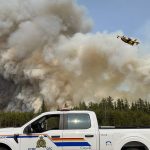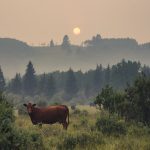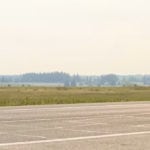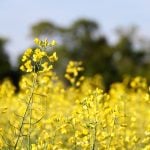
Tag Archives Smoke

Wildfire smoke poses health risks to farmers and livestock in Manitoba
Manitoba farmers urged to protect both themselves and their livestock from wildfire smoke and have a comprehensive evacuation plan ready in case of emergency situations

Smoke inhalation can affect cattle
Research shows an effect in housed dairy cattle so outdoor beef animals are surely affected too

Western Canada covered in smoke as wildfires loosen grip on Quebec
Over 200 of 449 wildfires now out of control

International help rolls in to fight unyielding Canadian wildfires
Almost 80 of Quebec's fires currently out of control
Smoke and its impacts on our weather
Smoke can inhibit convection, the main force behind cloud and rain development

Pulse weekly outlook: Better growing conditions despite dryness, smoke
Continued smoky skies could slow crop development
Smoke’s impact on weather
Try not to get too upset with your weather forecasters during smoky spells

Lazy, hazy, smoking days of summer
It would’ve been even hotter over the last couple of weeks without the smoke in the air

Forest fire smoke invades Manitoba skies
Thick smoke from neighbouring forest fires has been lingering over Manitoba but experts say it’s unlikely to impact plant growth




